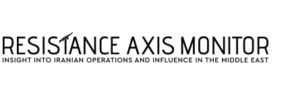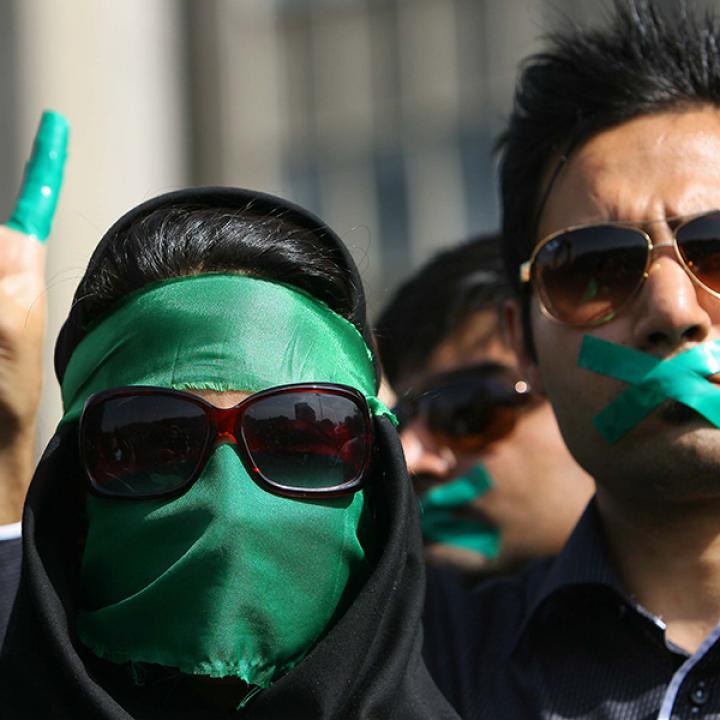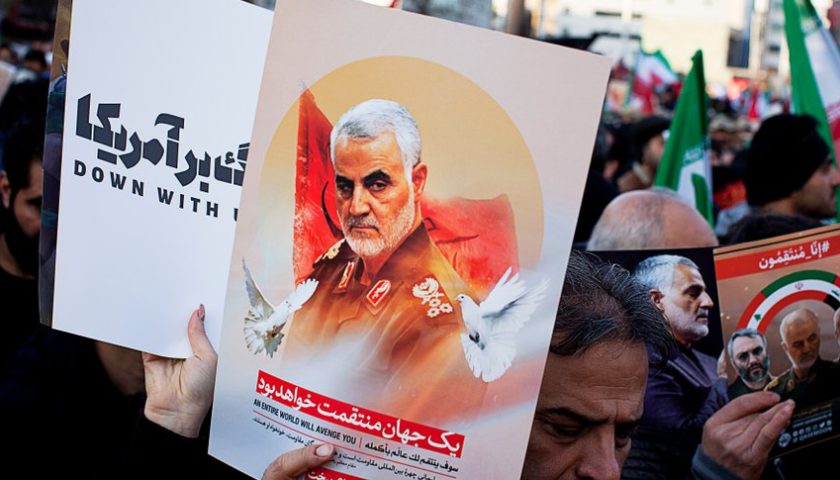This analysis originally appeared in The Washington Institute For Near East Policy on January 5, 2022.
The Supreme Leader and the IRGC are asserting more control over the task of monitoring and managing protest movements, creating yet another intelligence agency in the process.
On December 8, Iran announced that it had restructured its national police force, a pillar of the regime’s internal security apparatus. Among other decisions, the organization’s name was changed from the Law Enforcement Force to the Law Enforcement Command (LEC). The addition of “Command” means that the head of the force now boasts the same legal status as the heads of the Islamic Revolutionary Guard Corps (IRGC) and the Artesh. Moreover, the police intelligence unit was upgraded into its own organization. These changes indicate that the Islamic Republic remains concerned about mass protests after facing two nationwide demonstrations since late 2017 and two large-scale protests in Isfahan and Khuzestan provinces earlier this year. In each case, Law Enforcement anti-riot units were deployed to the frontline.
Supreme Leader Ali Khamenei gave the reorganization order to the Armed Forces General Staff, under which the LEC operates. AFGS commander Mohammad Bagheri, a major-general in the IRGC, described the initiative as being “many years” in the making. He unveiled the restructuring at a ceremony attended by LEC head Hossein Ashtari, himself a former IRGC general. According to the semiofficial Mehr News Agency, one of the initiative’s main planners was Brig. Gen. Ayoub Soleimani, a ranking IRGC commander and former LEC deputy commander who was appointed planning deputy of the AFGS in 2020 (he is no relation to the late Gen. Qasem Soleimani).
Under the current command structure, the president’s interior minister (currently Ahmad Vahidi) serves as the AFGS deputy commander for law enforcement affairs. Yet the minister’s actual authority over these affairs is limited to “logistical issues,” as scholar Saeid Golkar put it. The LEC’s true decisionmaker is formally appointed by the Supreme Leader, essentially giving Khamenei full command of the force without any input from the presidency.
A key part of the reshuffle involves dividing the force’s intelligence and general security departments into two distinct entities, the LEC Intelligence Organization and LEC General Security Police. IRGC officers have long held the top positions in these departments, often both at the same time. The current dual commander is former IRGC Ground Forces general Mohammad Babai; he is a candidate to head the new intelligence organization as well, though that appointment has not been announced yet. Notably, the reorganization increases the Islamic Republic’s total tally of national intelligence agencies to seventeen.
The regime has previously restructured its internal security apparatus with the aim of improving its ability to crack down on dissent. In 2009, Khamenei signed off on upgrading the IRGC’s intelligence directorate into the separate IRGC Intelligence and Security Organization after the Ministry of Intelligence was accused of failing to sufficiently quash the mass protests that followed the disputed presidential election. The IRGC organ has since eclipsed the national ministry as Iran’s premier intelligence apparatus, creating rivalries and overlapping responsibilities that sometimes burst into the open (e.g., when the IRGC arrests environmental activists as spies).
In theory, establishing a separate LEC Intelligence Organization will allow the regime to pour more resources and staff into monitoring and managing protest movements, while simultaneously freeing up other intelligence agencies to focus on espionage, counterespionage, and similar activities. The latter goal has become especially important in light of major recent intelligence failures such as the assassination of nuclear official Mohsen Fakhrizadeh and the bombing of the Natanz nuclear facility. One can also expect close cooperation between the new organization and the IRGC, and probably more IRGC personnel staffing it—though bureaucratic competition due to overlapping responsibilities should not be ruled out.
In addition, officials are establishing a new IRGC command zone encompassing Alborz province and the western portion of Tehran province. This change is probably being made to better cope with the intense protests that have periodically shaken Karaj, the provincial capital located less than an hour’s drive from Tehran.
The restructure will also divide the Amin Police Academy into an officer training university and a “Comprehensive Graduate University,” following the IRGC’s established pattern with its academies and universities. The goal is to invest more in disciplinary technology, recruit civilians from the university, and make it easier for scholars and students to work with the LEC. Relatedly, the force is adding a Research, Technology, and Sciences Directorate, likely reflecting a desire to improve domestic surveillance by prioritizing the integration of advanced tech. Shortly after the LEC announcement, Sorena Sattari, the Raisi government’s vice president for science and technology, offered to cooperate with law enforcement and better coordinate between universities and knowledge-based companies with the goal of advancing law enforcement missions. This potential nexus bears close watching.
Publicly, many military and intelligence officials have praised the decision as a welcome transformation. IRGC chief Hossein Salami issued a letter to Ashtari congratulating him on a “new chapter” that will strengthen the LEC’s place in “the geometry of the country’s security and determination.” He also vowed that the IRGC and the paramilitary Basij are fully prepared to “expand and deepen bilateral cooperation.” Similarly, former Tehran-based LEC commander Morteza Talai stated that the shift will “raise morale” and put the force “at the same level as other armed forces.” Former IRGC political commissar Hojatoleslam Ali Saidi, who currently directs the commander-in-chief’s political ideology desk, went further by explicitly referring to mass protests, calling the restructured force the “tip of the blade in confronting seditions.”



